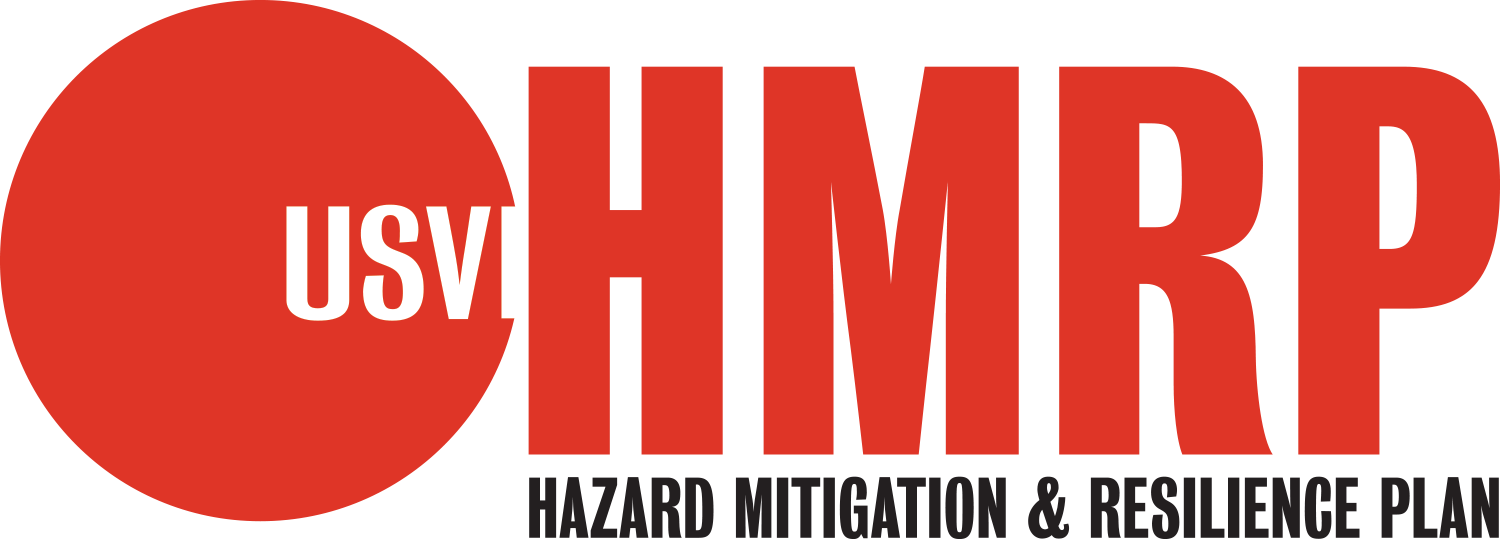Sustainability Planning
Sustainability Planning
Jeffrey Euwema presents to stakeholders at a planning meeting.
Mapping Hazards
UVI is developing a Composite Hazard Map. This map is being built using simple hierarchal weighting and mathematical operations in a Geospatial Information System (GIS) software to integrate disparate hazards into one map to inform future development planning efforts, specifically those outlined below. This map will delineate areas prone to multiple hazards so as to guide land use and sustainability planning decisions.
Historical Land Cover Baseline Maps
UVI is performing a historical land use analysis using satellite imagery. Archived aerial photography will also be used where possible to help with quality assurance. This historical analysis will provide baselines for future trend analysis.
In order to understand sustainability we must develop a current and future growth trend analysis.
Current Land Use / Land Cover Map
Based on current imagery, and with the help of satellite and/or aerial photography, a current land use/land cover map is being developed using a modified version of the NOAA Costal Change Analysis Program (C-CAP) land-cover classification, which is a leading global methodology. The accuracy of the resulting land cover database will be crucial baseline for understanding historical maps and assessing future land use proposals. For ensuring accuracy, field-based reference data and expert opinion solicitation is being used along with other data sources including aerial photographs.
Current Trend and Smart Growth Scenarios
The primary task associated with understanding sustainability is the development of a current and future growth trend analysis. For the current trend scenario, continuation of historical trends (so called Business As Usual) is used to understand the disadvantages and vulnerabilities that such scenario might cause in the future, with emphasis placed on hazard and risk information. For the Smart Growth Scenario, vulnerable and protected, or strategic, natural areas (identified in land use mapping and hazard and risk assessments) will be 'subtracted' using GIS grid analysis to determine areas best suited for future developments. UVI has also created a third category, "Feasible", as experience with the last comprehensive planning efforts in the Territory, has shown that proposed land use and zoning designations were seen as too restrictive, and presented too many hurdles to be accepted by planning practitioners
Business-As-Usual Scenario
This scenario establishes an understanding of existing and potential constraints to future growth in view of such factors like planned infrastructure (roads, energy infrastructure, and docks); allocated densities in land use categories (urban, peri-urban, rural and coastal areas); and natural features (topography, coastal and water-features etc.). Recent growth trends ascertained from the historic land cover analysis (defined above) along with demographic, economic and utility data, is used in statistical and spatial models to project growth for established future temporal threshold (i.e. 2050).
Smart Growth Scenario
This scenario, similar to the Business-As-usual Scenario, factors in selected sustainability constraints to "subtract" out areas that are vulnerable to natural disasters and climate change effects and ensure that there is appropriate infrastructure in place for future growth. The Smart Growth Scenario incorporates other commonly used sustainable planning concepts in its projection of the Territory's future (e.g., use of green spaces and green infrastructure for risk reduction; protection of cultural resources and landscapes, "self-sufficient" energy reliance and socioeconomic integration). These inputs are helpful for informing future land use planning endeavors in the Territory (i.e. New Land Use and Zoning Plans at DNPR).
Feasible Scenario
The Feasible Scenario is being built by selecting variables relevant to visualize a realistic "future", where the development objectives and aspirations of the smart growth scenario are balanced by several variables such as cultural attitudes, political will, capacities of the local government to implement and enforce, etc. For the Feasible Scenario, the suitability model will include the attraction factors to particular locations or agglomeration of developments and/or economic activities, enforceable restriction factors, and implementable plans, policies and investments.
Ecosystem Services Analysis
From the different land-use scenarios, UVI is analyzing the flow of ecosystem service benefits accruing to specific sectors and communities. Priority ecosystem services is being mapped to understand biophysical (e.g., avoided erosion or flooding), social (e.g., number of people protected), and economic metrics (e.g., avoided damages) to identify where and from which habitats services are the most important for delivering services and critical to safeguard and/or reduce the risk of further degradation when looking at future development scenarios or planning for the expansion of development activities. A specific suite of models is being employed to quantify the spatial variation and change in services by linking biophysical processes with social and economic information and approaches.

